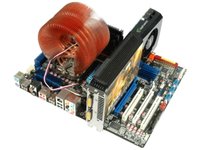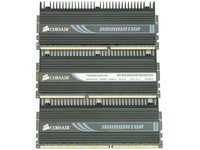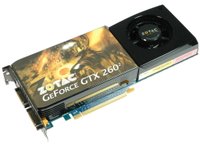Windows 7 And Windows Vista: Performance Compared
Hardware And Test Details


We decided to use our 2009 reference platform (the one you've seen us use for comparing benchmark results all year long) to maximize both performance and the possible differences between Windows 7 and Windows Vista.
The platform includes an Asus P6T X58-based motherboard, Intel Core i7-920 2.66 GHz CPU, and three Corsair DDR3-166 TR3X 2GB DIMMs. The system operates at the default DDR3-1066 speed and CL8-8-8-24 timings. Though those certainly aren't aggressive settings, accelerated timings don’t have much impact on system performance at this high level anyway. WD’s VelociRaptor cannot compete with the latest generation of SSD drives anymore, but it still represents one of the fastest mechanical hard drives you can get. Its 2.5” form factor, paired with a 10,000 RPM spindle speed, returns excellent throughput and quick access times. Finally, we used a Zotac GeForce GTX260² (55nm) as the graphics card. You can expect our choice for 2010 to come from ATI's Radeon HD 5800-series.


Test Details
We ran the majority of our performance benchmark suite, as well as some analysis on bootup time, time to standby, return from standby, time to hibernation, return from hibernation, and shutdown time. We installed Intel chipset and Nvidia graphics drivers and all available Windows updates available as of October 15, 2009. The system also included Microsoft Security Essentials antivirus, which we believe was necessary to reflect everyday operation. Most users wouldn’t run a productivity-oriented system without an antivirus tool. Our virus definitions were dated October 19, 2009.


Boot Test
We started our stopwatch right after the BIOS POST and stopped it once the browser had finished loading the Tom’s Hardware front page. We placed Internet Explorer 8.0 into the startup folder to make this happen. To make sure that the network connection didn’t influence the total boot time, we stored the Web site locally, disabled the network controller, and unplugged the cable.
Standby Test
Get Tom's Hardware's best news and in-depth reviews, straight to your inbox.
We measured the time it took from the moment of selecting standby mode to when the hard drive shut down. Then we measured the time needed for the system to resume to full operation. On this go round, the display of the login screen was the point at which we stopped timing.
Hiberation Test
Hibernating the system makes more sense than going into standby if you know that you won’t be using the system for a while but still don’t want to exit all applications. Again, we tracked how long it took for the system to complete the hibernation procedure, which basically copies the entire memory contents to the hard drive, until the hard drive switched off. When we turned it back on, we measured time between BIOS POST and display of the login screen.
Shutdown Test
We waited roughly five minutes after the bootup test so any background tasks could finish loading, then we started our stopwatch upon initiating shutdown. The process was complete once the motherboard LEDs went black.
Since we did manual time taking with a stopwatch, some slight inaccuracy in the results is inevitable. However, we repeated each of the tests at least five times and averaged the results. Inaccuracies typically fell within 0.5 and 1.5 seconds—a negligible amount in the light of the results.